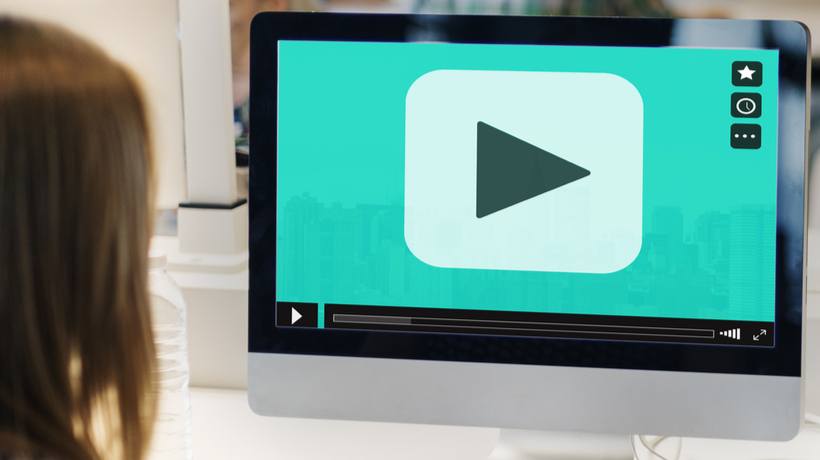Project-Based Learning In eLearning
Project-based learning gives learners the opportunity to expand their knowledge base and develop skills through problem solving and investigation. A real world problem or question is at the heart of every project-based eLearning experience, and learners must conduct research and acquire the necessary information to arrive at their own conclusion. Project-based learning also encourages learners to share feedback and insights with their peers in a collaborative group setting, and then use modern eLearning technologies to share their findings.
This approach focuses on the path leading to the solution, instead of just the solution itself. Online learners are able to gain invaluable experience by doing and actively participating in the learning process, rather than just reading the information presented and then taking a test at the end of the eLearning course.
The Characteristics Of Project-Based Learning Activities
When deciding to provide your learners with a project-based learning activity keep in mind to include the following elements:
- A problem, challenge, or question.
At the root of all project-based learning activities there is question, challenge, or problem. This problem should provide a sufficient level of challenge for the learner. - Skills for success, essential knowledge, and understanding.
Every project you integrate into your eLearning course should be centered on the learning goals and skill sets that your learner needs to develop. They must also focus on self-management and critical thinking skills that help the learner to arrive at their own solution. - Authenticity and relevance.
The project must include a real world problem or question that is relevant for your learners, as well as tools and ideologies that you would encounter in the real world. It can also address a particular concern that the learner may have, or challenges they face on a regular basis. - Freedom of choice.
Students must have the ability to make decisions autonomously throughout the eLearning project, such as which strategy they will use, what they produce, and their work process. - Self- Reflection.
After the eLearning project has concluded learners should be able to reflect upon the experience and their inquiry process, as well as the activities involved in the eLearning project and the challenges they faced while trying to reach a solution. - Feedback.
Learners must be able to give and receive feedback, including peer-based feedback, to expand their knowledge of the subject matter and to continually improve their work process and how they presented their findings. - Public presentation.
At the end of the eLearning project, learners should publicly present their findings to their peers or in a public forum. They should be able not only to discuss their findings, but also how they arrived at the solution.
4 Tips To Use A Project-Based Learning Approach In eLearning
- Do a test-run beforehand.
You don’t want to spend hours developing an eLearning project only to discover that it cannot be easily deployed or may be too challenging, or too tedious, for your learners. This is why it’s best to complete the online project on your own before you ask your learners to do the same. Make sure that all of the necessary elements are in place, and that it serves the primary learning objectives of your eLearning course. - Encourage peer-based feedback.
After the student has produced their findings, encourage their peers to share their insights and opinions via online forums and free online project management platforms. This gives them the opportunity to benefit from the constructive criticism of their peers and to improve their work processes moving forward. They also get the opportunity to discover alternative solutions or other problem-solving approaches they can use in future eLearning projects. - Put students in charge of their learning process.
Give your learners the tools they need and clearly outline the parameters, then let them take control of the process. Micro-managing your learners throughout the eLearning project will not give them the chance to learn from their mistakes, which is doing them a great disservice. If they need assistance, give them access to support. Otherwise, let them navigate the choppy waters of problem-solving on their own or by working collaboratively with their peers. - Integrate interactive scenarios and simulations that require a broad range of skills.
Scenarios and simulations are custom tailored for project-based learning, thanks to the fact that they immerse the learner in a problem or situation and ask them to figure out the solution. Each branch in a scenario leads to a different outcome or unique set of choices, which allows them to explore the problem without any risk. Every choice they make in a simulation leads to a consequence, good or bad. Create interactive eLearning exercises that envelope them in project-based learning and require a broad range of skill sets, so that they can apply previously acquired knowledge and more effectively retain the information they need to improve their personal and professional lives.
Project-based learning is all about a journey to the solution, and you can use these best practices and top tips to develop an eLearning journey that is powerful, personal, and relatable for every member of your audience.
Now that you know how to effectively use project-based learning in your eLearning course design, read the article How To Create A Meaningful eLearning Experience: 6 Tips For eLearning Professionals to discover 6 top tips that can make your eLearning course even more meaningful and memorable for your audience.









